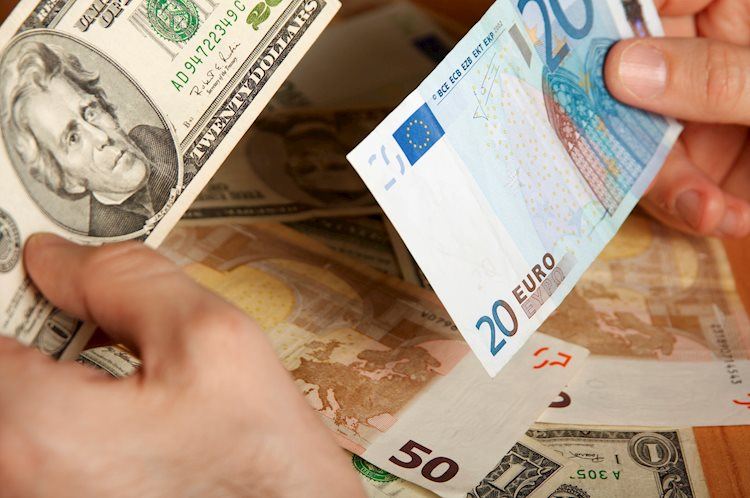- The Euro fades the initial uptick above 1.1000 against the US Dollar.
- European stocks trade with decent gains so far on Wednesday.
- Flash Germany’s CPI, advanced US Q3 GDP Growth Rate next on tap.
The Euro could not sustain another bout of strength past the 1.1000 mark against the US Dollar on Wednesday, prompting EUR/USD to recede to the 1.0970 region against the backdrop of the so-far decent rebound in the US Dollar.
Still around the Greenback, it manages to gather some fresh buying interest and approaches the key barrier at 103.00 the figure when measured by the USD Index (DXY).
The current monetary policy landscape remains unchanged, with investors incorporating the possibility of future interest rate cuts by both the Federal Reserve (Fed) and the European Central Bank (ECB) in the spring of 2024.
On the euro docket, the focus of attention will be on the release of the flash Inflation Rate in Germany for the month of November.
Across the pond, the advanced Q3 GDP Growth Rate will take centre stage along with preliminary Goods Trade Balance figures and the usual Mortgage Applications tracked by MBA, while the release of the Fed’s Beige Book will close the calendar later in the NA session.
In addition, Cleveland Fed Loretta Mester (2024 voter, hawk) is also due to speak.
Daily digest market movers: Euro’s upside falters around 1.1020
- The EUR accelerates its decline against the USD.
- US and German yields extend their march south midweek.
- Investors contemplate the Fed reducing its interest rates in Q2 2024.
- Markets expectations place the ECB cutting rates in H2 2024.
- ECB’s Luis De Guindos said banks are delaying passing higher rates to savers.
- BoJ’s Seiji Adachi said a positive wage-inflation cycle is needed to change stance.
Technical Analysis: Euro faces the next resistance at 1.1064
Further upside momentum lifted EUR/USD to new monthly highs near 1.1020 on Wednesday, although this bullish move have ran out of steam afterwards.
The November high of 1.1017 (November 29) is now the EUR/USD’s immediate target, followed by the August top of 1.1064 (August 10) and another weekly peak of 1.1149 (July 27), all of which precede the 2023 high of 1.1275. (July 18).
Meanwhile, any corrective declines should find first support around the crucial 200-day SMA at 1.0814, followed by the temporary 55-day SMA at 1.0671. The weekly low of 1.0495 (October 13) follows next, seconded by the 2023 low of 1.0448 (October 3).
Meanwhile, the bullish outlook for the pair remains unchanged as long as it trades above the 200-day SMA.
ECB FAQs
The European Central Bank (ECB) in Frankfurt, Germany, is the reserve bank for the Eurozone. The ECB sets interest rates and manages monetary policy for the region.
The ECB primary mandate is to maintain price stability, which means keeping inflation at around 2%. Its primary tool for achieving this is by raising or lowering interest rates. Relatively high interest rates will usually result in a stronger Euro and vice versa.
The ECB Governing Council makes monetary policy decisions at meetings held eight times a year. Decisions are made by heads of the Eurozone national banks and six permanent members, including the President of the ECB, Christine Lagarde.
In extreme situations, the European Central Bank can enact a policy tool called Quantitative Easing. QE is the process by which the ECB prints Euros and uses them to buy assets – usually government or corporate bonds – from banks and other financial institutions. QE usually results in a weaker Euro.
QE is a last resort when simply lowering interest rates is unlikely to achieve the objective of price stability. The ECB used it during the Great Financial Crisis in 2009-11, in 2015 when inflation remained stubbornly low, as well as during the covid pandemic.
Quantitative tightening (QT) is the reverse of QE. It is undertaken after QE when an economic recovery is underway and inflation starts rising. Whilst in QE the European Central Bank (ECB) purchases government and corporate bonds from financial institutions to provide them with liquidity, in QT the ECB stops buying more bonds, and stops reinvesting the principal maturing on the bonds it already holds. It is usually positive (or bullish) for the Euro.
Read the full article here

